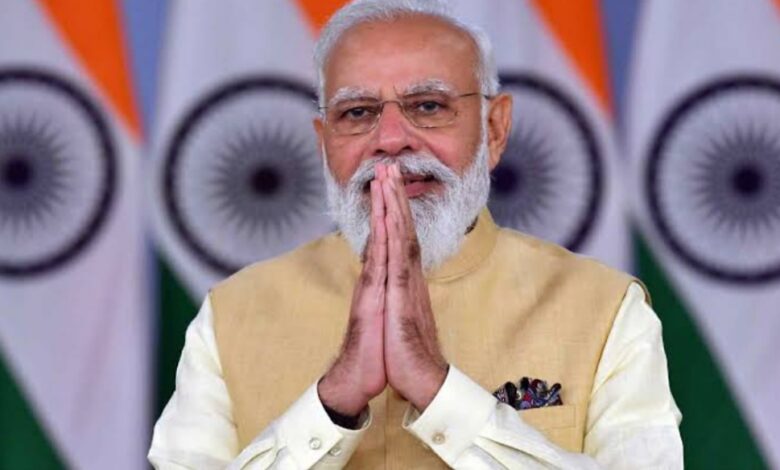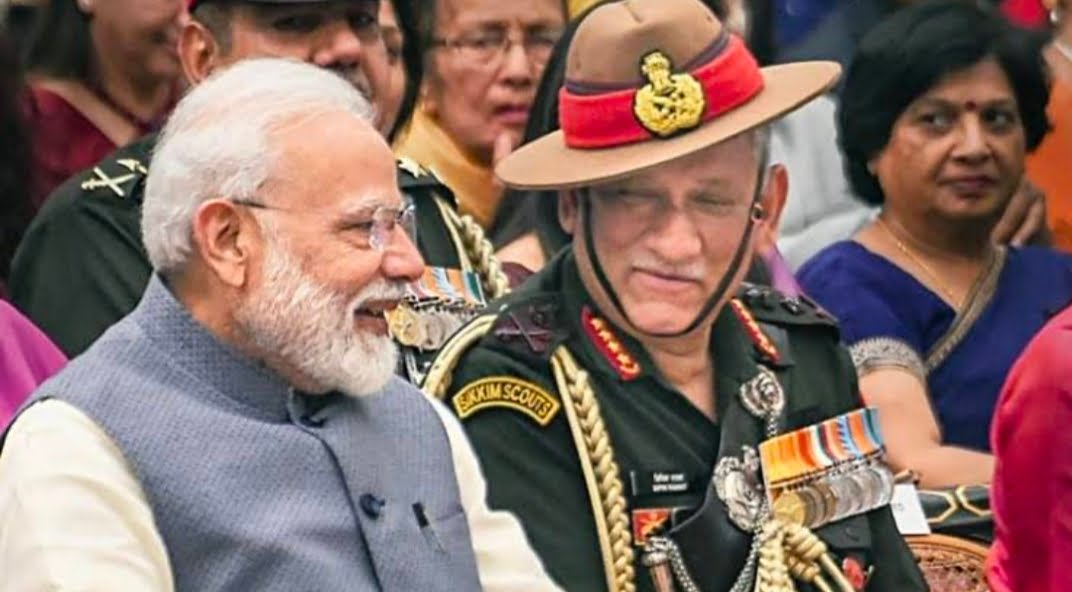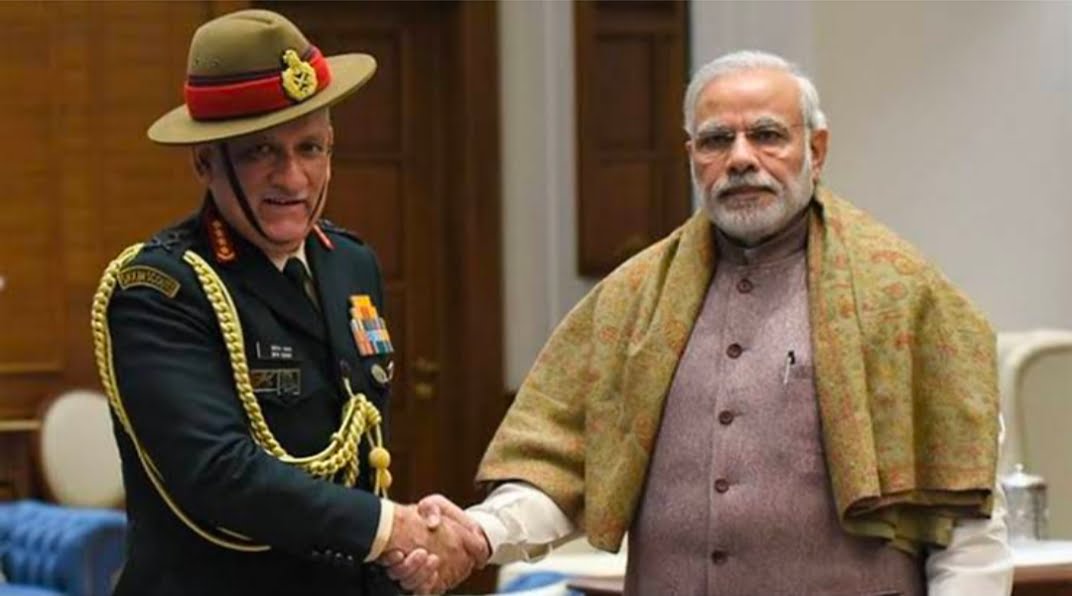
With PM Modi In Power, India’s Defence Reforms Have Seen An Increase
A Pakistani incursion across the Line of Control (LoC) triggered the Kargil War in the winter of 1998-1999. In 1997, General Pervez Musharraf conspired with his ‘clique of generals’ to topple the Pakistani government. Its goal was to block the Srinagar-Zojila-Kargil Road to prevent Ladakh maintenance and, by implication, the Indian Army deployment at the Siachen glacier.
Moreover, Pakistan could negotiate from a stronger position due to the intrusions on strategic territory across the Line of Control. This military action has no parallel in the military history chronicles. Still, it was unprecedented, involving all forces in cohesion and preventing the reprehensible designs of a pugnacious neighbour from violating the nation’s territorial integrity.
In ‘Operation Vijay,’ the Indian forces fought at heights of 16,000-18,000 feet to evict the Pakistani Army from the Line of Control on a frontage of almost 130 km to evict their intrusion. The enemy’s strategic advantage didn’t deter the Indian soldiers despite occupying the high ground.
Atmanirbhar Bharat
Modi has emphasized building India’s domestic defense industry. Currently, Atmanirbhar Bharat prioritizes defense production. Labour unions opposed the corporatization of ordnance factories, but the government is pressing forward regardless. The government works hard to promote both state-owned and private sector defense enterprises.

Most significant has been the change in mindset within the military and the defense industry toward collaborating. It was previously characterized by finger-pointing, mistrust, and mutual allegations of corruption. Stakeholders are now encouraged to work together, and the private sector isn’t viewed as a place of vice.
According to one estimate, defense industry exports have grown more than 700% from 2016 to 2020 with government encouragement. DRDO, in partnership with L&T, has acquired a Rs 5,400-crore order for 100 artillery guns (155/52 mm K-9 Vajra tracked SP) and two Lakshya pilotless targets aircraft. Bharat Forge and General Dynamics are manufacturing an FICV and a medium transport aircraft by Tata Strategic Division in collaboration with Airbus Industries.
TVS Logistics, MKU, Mahindra Defense Systems, Dynamatic Technologies, and others have also entered the defense market as manufacturers. Make in India will also benefit from two defense industrial zones. Several long-awaited purchases were made as well. The Modi government has put forth better equipment, the US SiG 716 rifles, the French Rafale jets, the Chinook and Apache helicopters, and the Russian S 400 air defense system.
Kargil Vijay Diwas
India won the Kargil war 23 years ago, on July 26, 1999. In the nearly three-month-long conflict with Pakistan from May-July 1999, 527 soldiers were martyred at the Kargil heights, and more than 1,100 soldiers were wounded. On Kargil Vijay Diwas, the nation pays homage to the thousands of soldiers lost there. A nuclear holocaust could have been averted by the brave soldiers of the Indian Army on this day, despite insurmountable odds.
During the last three decades, India has gained international acclaim for its mature and restrained response under the leadership of Atal Bihari Vajpayee and for taking on Pakistan both militarily and morally. On this Kargil Vijay Diwas, we should remember and congratulate India’s martyrs who stood up in Kargil and fought bravely.

Security reversals, however, expose gaps in our security system, and critics point out that we are too focused on the past rather than on the future when dealing with crises.
The security system of the country has flaws, therefore. The same strategy will never be used by a defeated opponent again. An adversary who has witnessed our defeats repeatedly yet has not given up on vengeance must be prepared to retaliate against India. People, the government, the media, and the political class fight wars, not only the armed forces.
Among the events that unified the country was the Kargil war. It’s invaluable for our politico-military structures and processes to learn from the lessons gained during the conflict. A shift from focusing on the Pakistani border to a broader focus on the Chinese threat is demonstrated by the Indian military’s constant use of the phrase “two-front war” throughout the past decade.
For over 50 years, India’s military has faced its most severe military crisis with China. Indian and Chinese military personnel were injured during clashes along the disputed border in 2020-21 because of Chinese troop deployment. There has been a slight drawdown of forces, but there is still a long way to go regarding the crisis. According to the Stockholm International Peace Research Institute, India has the distinction of being the world’s largest arms importer over the past four decades following the Kargil War in 1999.
The Ladakh crisis highlighted the importance of drones and cyber warfare for the Indian military. It is highly vulnerable to external influence during times of war because of this. In addition, even if we were to achieve self-sufficiency in defense production, it would take time.

Achieving 70% production of our defense needs and 30% imports will take decades and enormous effort. Kargil Review Committee was formed after the war to learn lessons and develop higher defense management. The past governments have acknowledged this problem, but their policy remedies haven’t worked.
The Reforms
One reform recommended by the Kargil Review Committee related to armed forces recruitment. A young and fit Army is essential. Consequently, instead of continuing with 17 years of colour service (as has been the practice since 1976), it would be advisable to reduce it to seven to ten years and then release the officers and men for service here. An Army proposal for a “tour of duty” scheme was proposed in 2020.
However, this proposal replaces the three-year service term with four years. As part of the immense task of reorganizing the armed forces into a theatre command to promote jointness and synergy, the Agniveer recruitment reform must be contextualized into a broader framework of defense reforms.

Defense Space and Cyber Agencies, Special Operations Division, and the corporatization of the Ordnance Factories (OFs) into seven Defence Production and Supply Units (DPSUs) are among them.
Additionally, in the wake of active border disputes with two hostile neighbours and hand-to-hand fighting in recent years, the Indian Army hardly could ignore its need for a young force. Therefore, the Agnipath scheme signals a new era of proactive defense reforms in India. By right-sizing the armed forces, this recruitment reform will help.
Aside from this, Beijing will likely increase military pressure on the disputed border, given its expansionist agenda. Agnipath, experts say, could be a masterstroke to respond to China as India’s young and tech-savvy Agniveer could be a real threat. In 1999, India was far from being secure. We still have a long way to go to secure our nation.
For the Indian military to be well-equipped, trained, and have clear military objectives, robust higher defense management is necessary. It concerns civil-military relations, security strategy, and greater synergy and jointness among the three military services.
A vital goal of the current political regime in the past few years has been to modernize the armed forces and increase the domestic defense industry through fast-track acquisitions. As India aims to become a significant power in the 21st century, it is committed to Make in India initiatives to ensure an “India First” policy.

Soldiers will be armed with cutting-edge technology and state-of-the-art weapons to fight a war in a highly informed environment in the future of warfare. This much-needed reform considers the imperatives of the fifth generation/hybrid warfare. These radical reforms are long overdue and necessary in light of rapidly emerging threats. An effective institutionalization of the interface between the MoD, the services, and the private sector at the policy-making level is necessary to sustain this momentum.
Edited by Prakriti Arora




